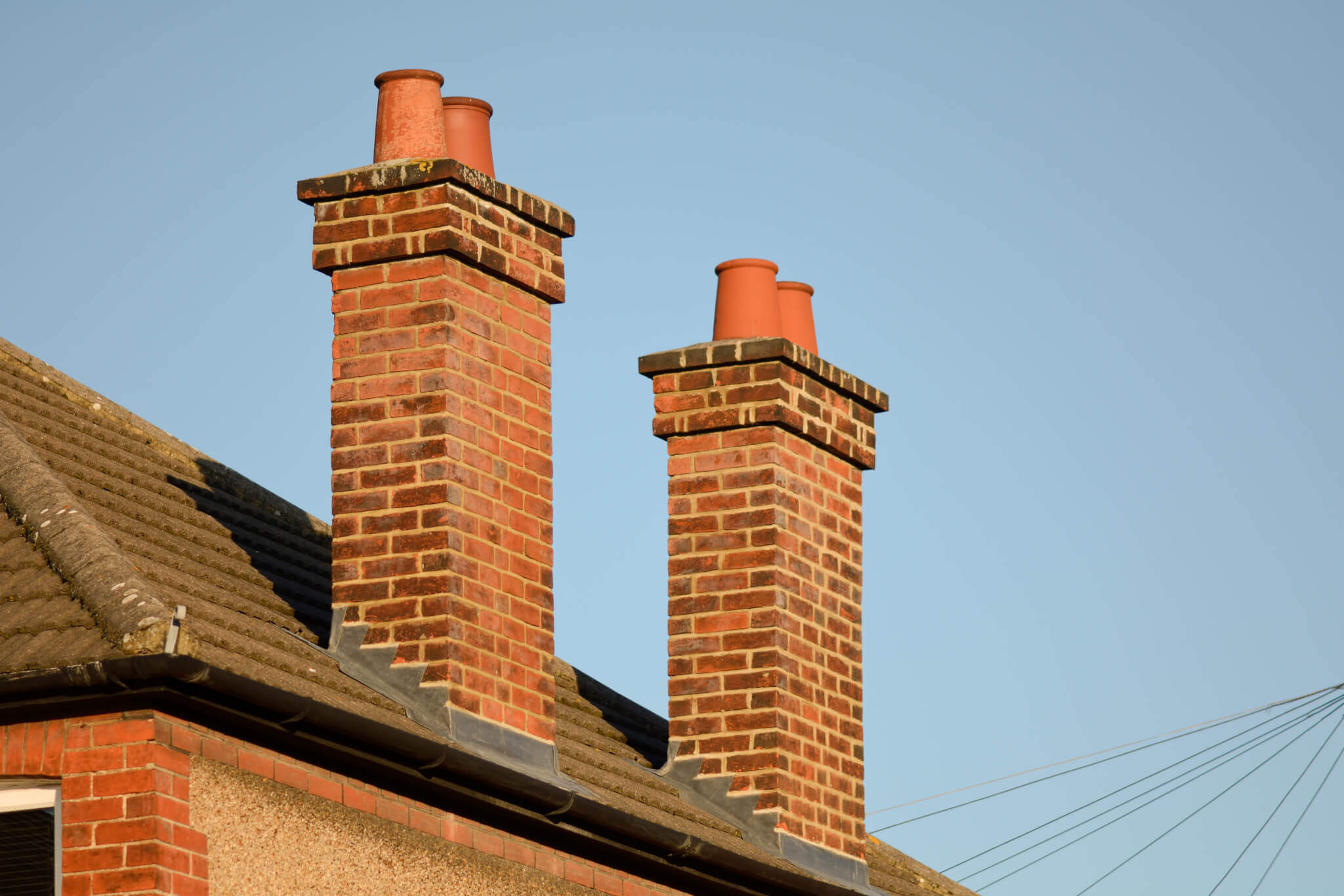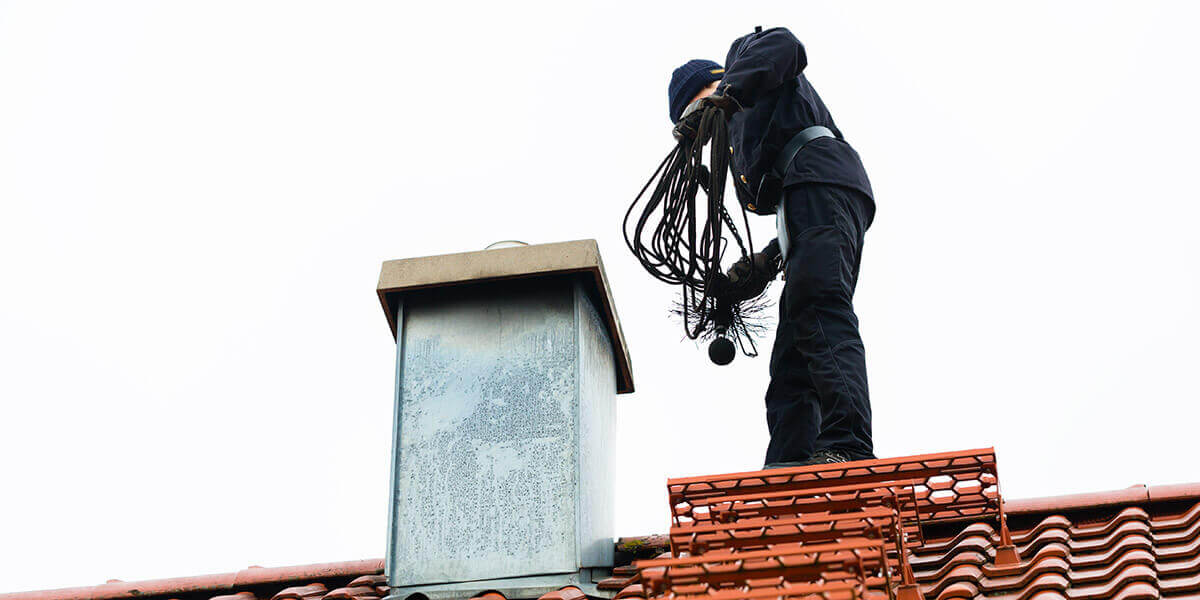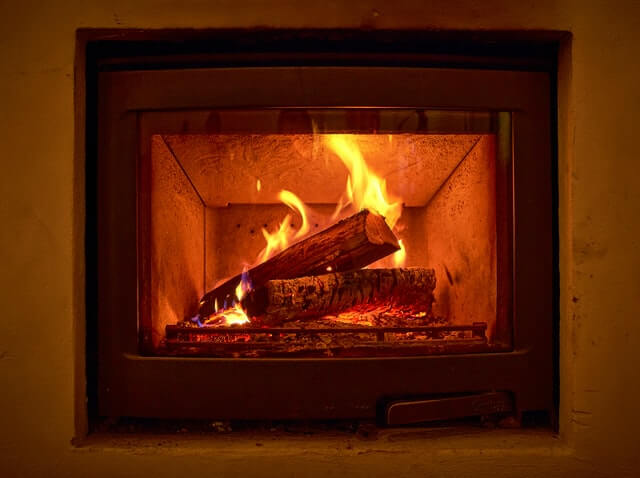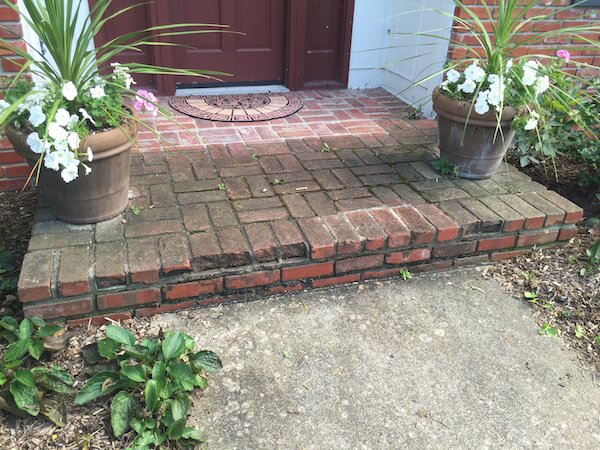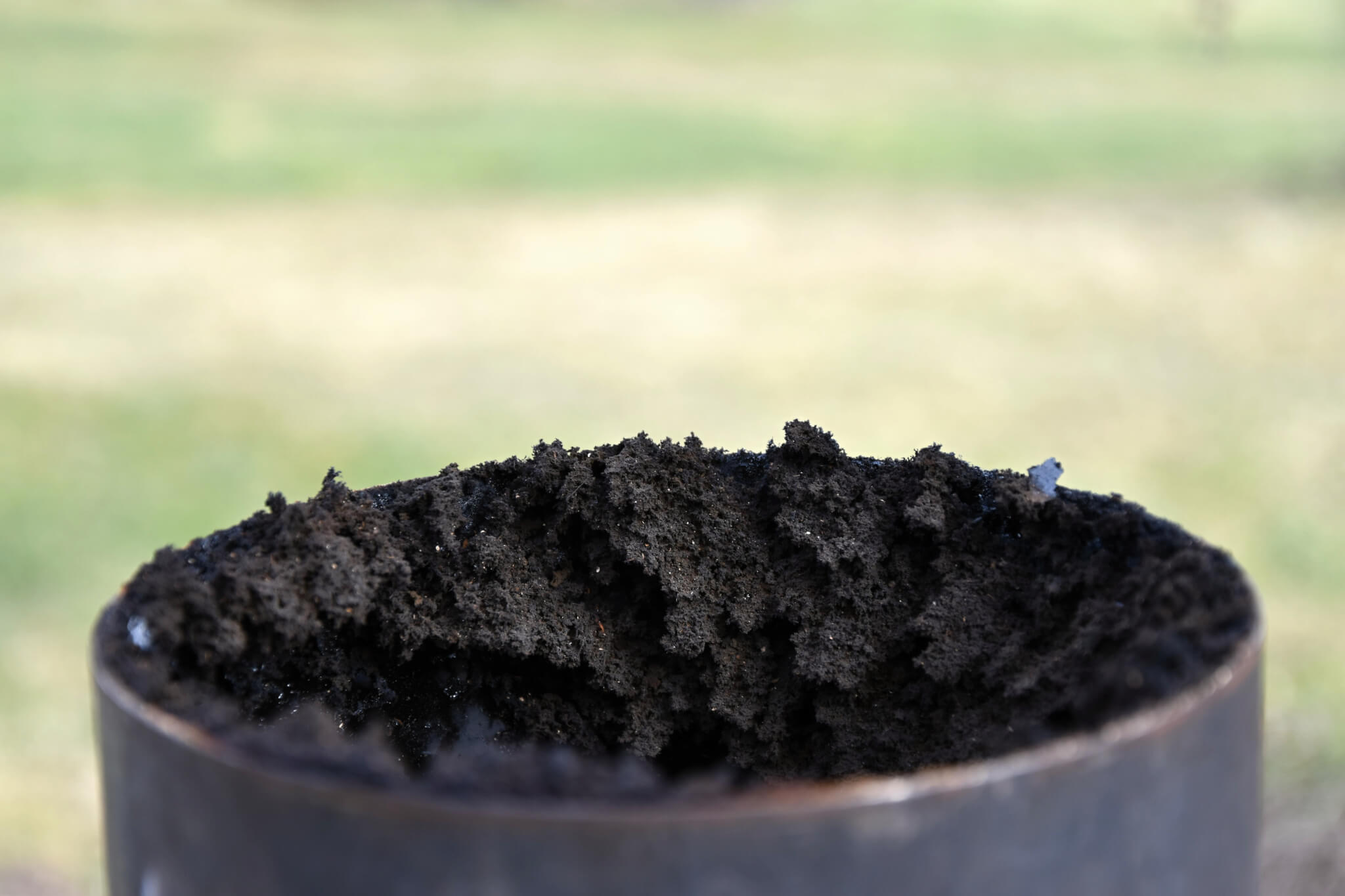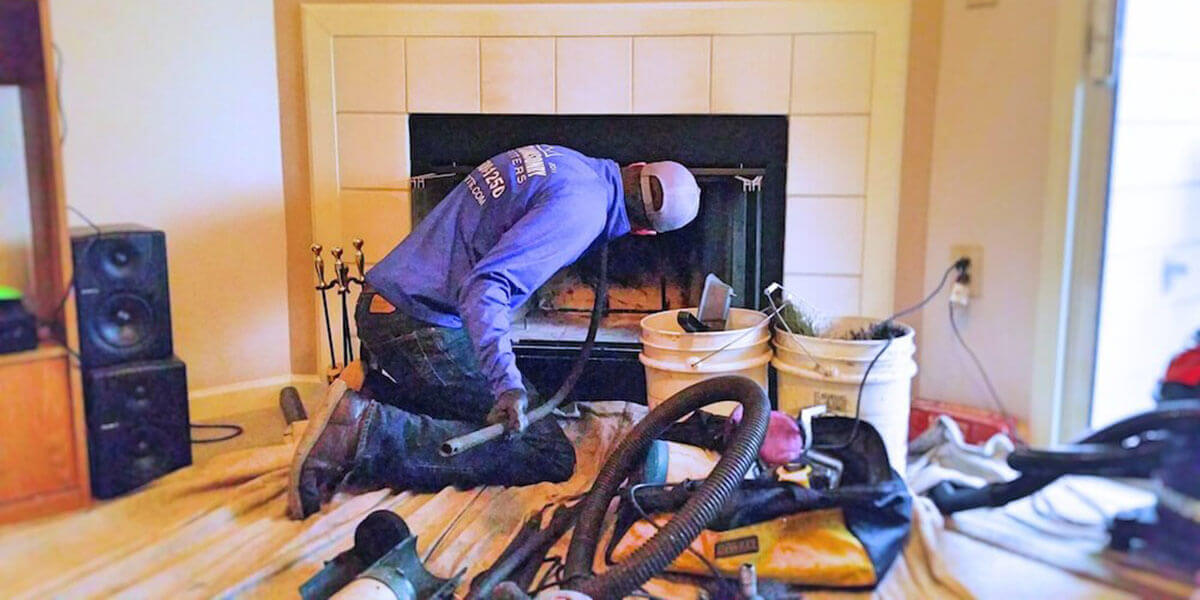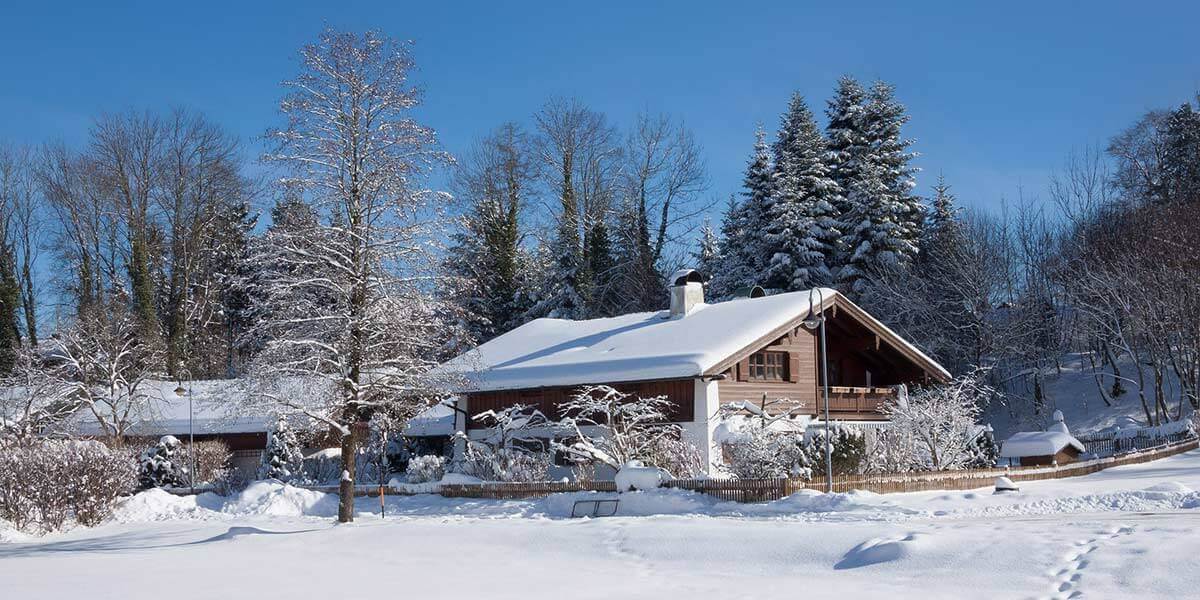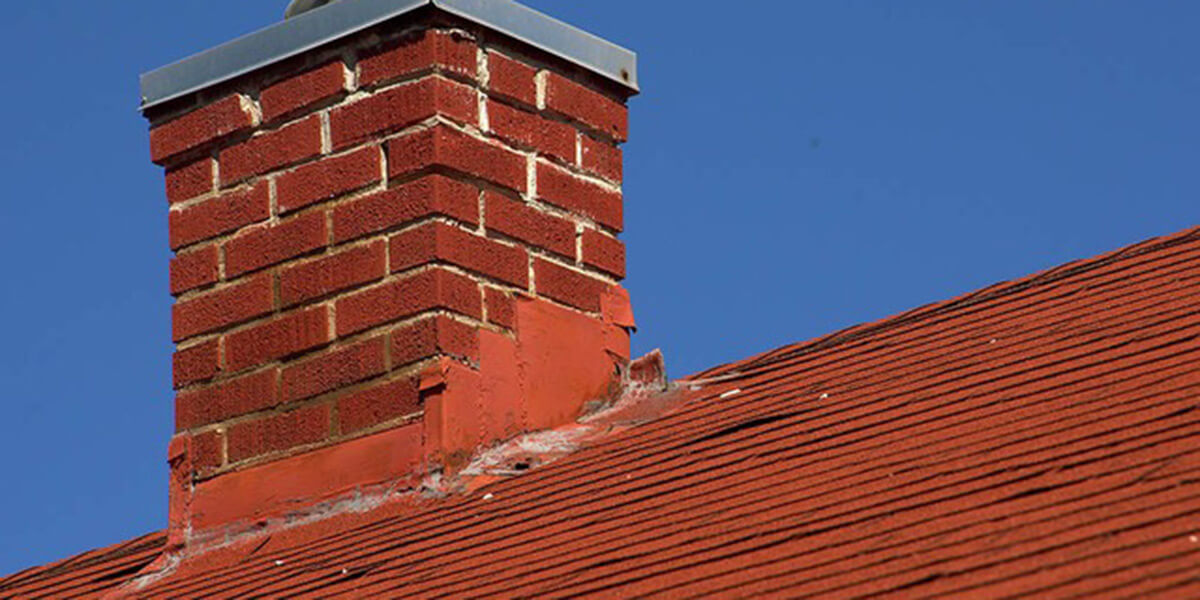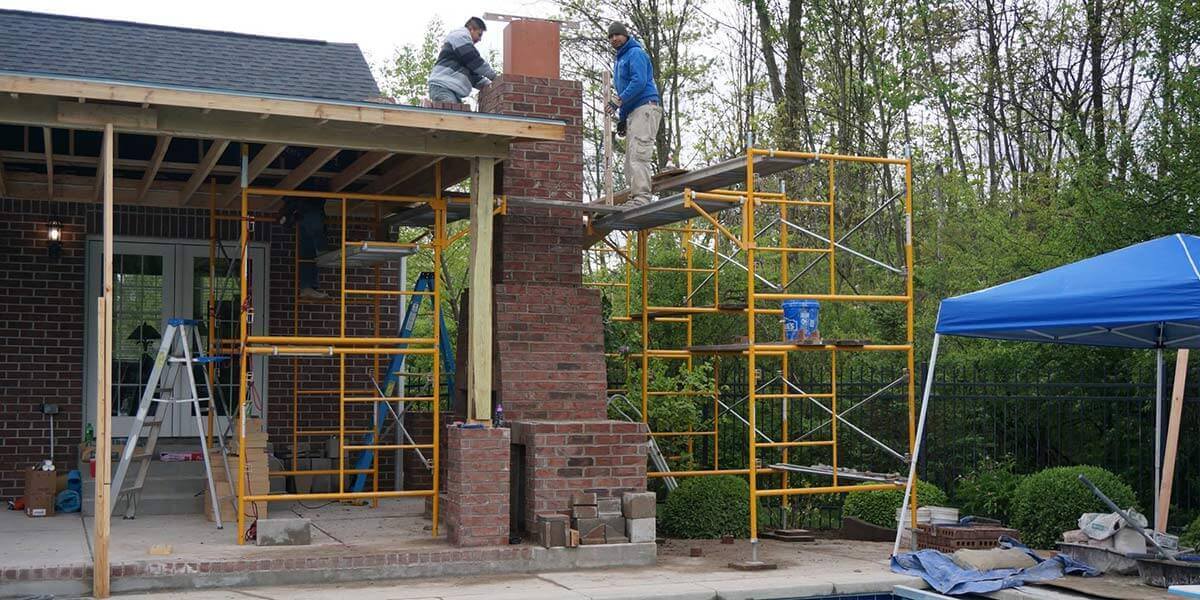What to Look for in a Chimney Inspection
Chimney inspection is a key part of keeping your home safe and sound. Damaged chimneys can lead to moisture and mold issues, exposure to carbon monoxide, risk of fire, and structural damage to your home. This may sound frightening, but fortunately, performing a regular chimney inspection will make it possible to repair damages and avoid these risks.
Performing Your Own Inspection
It is possible to perform your own chimney inspection in order to assess whether you need to hire a professional. It is recommended that your chimney is inspected once or twice a year, and if you feel confident about doing it yourself this is a great way to save some money. It is important that you are thorough and informed about what to look for during your inspection, so be sure to read on for tips on how to move forward.
Exterior
The first thing that probably comes to mind when thinking about inspecting your chimney is the exterior appearance. The exterior can suffer various types of damage over time, and is fairly easy to inspect. When performing your own chimney inspection, do the following:
- Remove moss, vines, and other growth
- Look for cracks or gaps in the mortar
- Notice whether the chimney is straight
- Look for rust or damage to caps/chase covers
If the outside of your chimney is in poor condition, it can lead to structural or water damage. Concerned about the condition of your chimney? Consider a restoration or rebuild.
Interior
Damage to the interior of your chimney is less obvious, but can be more dangerous in many ways. Interior damage can lead to house fires, dangerous fumes, or moisture issues. Below are key points for inspecting the interior of your chimney:
- Shine a strong flashlight on the interior of the chimney
- Check that the walls of the firebox are sound
- Look for debris (leaves, birds' nests, etc.)
- Notice whether the walls of the smoke chamber are smooth
If you notice any signs of cracks, roughness, or debris, consult a professional for advice and cleaning. Build-up in the chimney makes it unsafe to use, and probably means you need a chimney sweep or smoke chamber parging.
Hiring a Professional
If don’t feel comfortable inspecting your own chimney, our Outfitters are here to help. We offer all three levels of chimney inspection recommended by the Chimney Safety Institute of America, which include:
- Level 1: Routine assessment of healthy chimney
- Level 2: Assessment of chimney with suspected damage
- Level 3: Assessment of chimney with extensive or obvious damage
After having your chimney inspected, you may find you need to hire a professional to repair damages. Brick + Ember Outfitters Indianapolis offers the services mentioned above and many more, and we are here to keep your chimney safe and usable. To learn more about our services, give us a call at 317-500-1250, email us at office@brickandember.com, or submit a form on our website!
How Often Do I Need a Chimney Sweep?
The chimney is an important safety feature for your home. The chimney serves as an exhaust for the fireplace or wood-burning furnace of your home. Chimneys that are clogged with built-up soot will be less efficient, and potentially hazardous. Inefficient chimneys impact the burn of your fireplace and the flow of carbon monoxide from your home. When you burn wood, a tar-like substance called creosote is left behind. Creosote is flammable, so when it is left on the inside of your chimney it can lead to a chimney flue-fire which could reach the structural components of your home. To keep your chimney operating at maximum efficiency and prevent flue-fires, it is important to regularly get a chimney cleaning service like a chimney sweep.
Even if you do not use your fireplace, an annual sweep and inspection are crucial for your chimney. According to the National Fire Protection Association, “Chimneys, fireplaces, and vents shall be inspected at least once a year for soundness, freedom from deposits, and correct clearances. Cleaning, maintenance, and repairs shall be done if necessary.” Yearly chimney sweep and inspection are necessary for keeping your chimney in good working order and catching any issues requiring repair.
However, if you frequently use your chimney you may need more frequent chimney services. The CSIA (Chimney Safety Institute of America) recommends that fireplaces should be cleaned when 1/8″ of sooty buildup is present inside the chimney and flue system. If there is any glaze in the flue, cleaning should be done even if there is less than 1/8″ of build-up. Heavy fireplace use may require you to get a chimney sweep more than once a year. Always check and monitor your chimney for signs of soot buildup, and always consult a professional if you are unsure.
Indianapolis’s Best Chimney Services
For chimney cleaning and other chimney services in the middle Indiana area, trust Brick + Ember Outfitters. Certified by the Chimney Safety Institute of America, we have been rigorously tested and approved to handle chimney sweeps and inspections. Our dedicated team strictly adheres to industry regulations and safety standards. With our experience and commitment to restoring or preserving the beauty of your chimney or masonry, Brick + Ember Outfitters is your trusted partner for homeowners in the Indianapolis Indiana area.
Schedule your annual chimney sweep today. Just give us a call at (615) 645-3545, send an email to OFFICE@BRICKANDEMBER.COM, or click HERE.
Why Is My Chimney Pulling Away from My House?
If your chimney is starting to tilt to one side, you might just shake it off and tell yourself that it is simply an illusion. Do not ignore your gut; a leaning chimney is not only more common than you think, but it can also be dangerous in many ways. The best thing you can do is get a chimney repair.
If you live in the middle Indiana area and believe that your chimney may be pulling away from the roof, Indianapolis Brick + Ember Outfitters (B+E) has the chimney service experts to call. Don’t waste another minute!
The Signs
If there is a gap in between the chimney and the roof, this is obviously a sign that the chimney pulling away and leaning off kilter. However, other signs and repercussions may include:
- Leaks of rain and snow caused from displaced flashing
- Intrusion of fumes and insects inside the home
- Falling bricks and mortar
These are all highly dangerous to the structure of your home. Although you might believe that mortar or caulk will adequately patch up the holes, you unfortunately will likely need a more extensive repair.
One way to check for leaning yourself is to peek into your attic to see if the chimney is centered in its framed opening. You can also use a long level on the outside to determine whether the chimney is vertical and the mortar joints are horizontal. Some chimneys are meant to be tilted, so rely on your measurements—not just what you see.
The Causes
Because chimneys are so compact and heavy, they must be constructed on what is called a concrete footing, or a chimney pad.
A common cause of a leaning chimney is footing that is made too small for the chimney or that has deteriorated. Expansion and contraction, which may happen when the weather changes, also results in instability.
Repairing your chimney
Brackets, claps, and systems of underpinnings and helical piers are used to straighten and support the chimney. This can only be done by a professional chimney sweep; never try to fix this on your own!
Because it can be difficult to spot a tilting chimney, get an annual chimney cleaning and inspection. Once detected, problems can be addressed before they become more severe and costly down the road. B+E of the Indianapolis area has the knowledge and tools to get the job done!
Chimney Sweeping Logs
Even in Indianapolis, Indiana, temperatures can get low. Unfortunately, a cozy wood burning fireplace is always going to be hazardous; every time wood combusts, it creates a flammable substance called creosote.
One new popular solution is to buy a product called a Chimney Sweeping Log. Many homeowners believe that this eliminates all creosote and is a substitute for a regular chimney inspection and sweeping.
This is simply not true. Although purchasing a Chimney Sweeping Log is a great option for those who use their fireplaces frequently, Brick + Ember Outfitters of Indianapolis can share why the correct chimney care involves a regular annual inspection.
Creosote
Creosote is a thick, sticky, and flammable substance made of tar, produced when wood is combusted. It builds up and stick to the inside of your chimney. It is difficult to remove and requires the tools and expertise of a chimney sweep.
Creosote also builds up in the bends of the flue, causes blockages, and affects venting. The last thing you want is for gas and smoke to billow back into your home.
How do chimney sweeping logs work?
The logs are made from a mixture of additives that will attach to creosote in your chimney when burned. Over the course of a week, a chemical reaction ensues: the creosote will become less thick, more brittle, and less flammable.
The texture of the creosote turns into a powder that falls off the walls of the chimney. When at the bottom of the fireplace, it is easier to remove.
Using your log
A log will burn for 1-1½ hours. Because it takes about one week for the chemical reaction to be completed, you should wait a week before using the product again. To help disperse the brittle creosote debris, burn regular wood fires in between.
Why is a chimney inspection is still necessary?
Sure, a Chimney Sweeping Log will help quell the dangers of creosote for a while. However, having a chimney sweep care for your chimney is the only way to cross the finish line. While the more brittle substance makes it easier for a sweep to get rid of the creosote, a log in no way will eliminate all the creosote present and stuck to the lining.
Additionally, you cannot substitute a log for the kinds of inspections that a chimney service provides: Are there cracks and breaks in the structure? Are animals or debris blocking the passageway?
Serving the middle Indiana area, Brick + Ember Outfitters of Indianapolis can perform a chimney cleaning that will guarantee your family’s safety and comfort!
The Ins and Outs of Front Porch Brick Repair
Whenever people visit your home, they are likely going to see your front porch before anything else first. It’s where you meet and greet and people form their first impressions of your home.
When your porch is in good working order, this is perfectly fine. When it’s in disrepair, it’s not only an eyesore, but it can make for a poor impression, making even the newest of homes seem unkempt and run-down.
Don’t you think it’s about time to fix that?
Here’s what you need to know about repairing the brick on your front porch.
Removing the Bricks
There isn’t anything wrong with wanting to repair the damage on your own. If you want to do that, the first thing you’re going to need to do is remove the loose brick.
Depending on the sturdiness of the brick and the overall condition of the porch, you may only need to use a pry bar.
Is the Structure Compromised?
What you see is not always what you get. Just because an issue seems cosmetic, doesn’t mean that it’s the only thing wrong. Just to be sure, you should see if the damage extends to the structure itself.
Does it extend far beyond the brick, into the cement? Does it affect a support wall, or other important structure? If so, you may want to bring in the professionals if you feel out of your depth.
If the damage hasn’t compromised the structure of your patio, home, or both, continue to remove the loose bricks, removing the old mortar and placing them aside for later use.
An Ounce of Prevention is Worth a Ton of Cure
As with all things, you’re going to want to take precautions so that you don’t end up having to redo your own hard work.
For one, new bricks tend to suck up a lot of moisture from the ground. We recommend digging a two-foot trench and filling it with crushed stones to prevent this. It’s also really important to have a secure connection to your support wall, so every few feet, make sure to nail a metal brick tie to it.
With this in mind, you should be ready to start reinstalling your old brick. Just start at the ledge in the support wall, and when you get a tie, bend up the end and rest the brick on the top. Cover it up with mortar, and then it’s on to the next one!
If All Else Fails, Bring in the Cavalry
Don’t be ashamed if things don’t go according to plan, though. We all have bad days, and sometimes a job is too big for one person.
If you are feeling out of your depth, or just don’t want to bother with doing it yourself, give Brick + Ember Outfitters a call. Not only will we look at and assess the damage, but give you a free quote.
What is Creosote? How Does a Chimney Sweep Prevent It from Causing a Chimney Fire?
When discussing chimney care, it is likely you will hear the words “dangerous” and “creosote." But what is creosote? Our chimney sweeps can help educate you on what creosote is, as well as give a proper chimney inspection and sweeping to keep any danger out of your home.
What is it?
Creosote is a byproduct of wood combustion and is composed of tar. When you burn wood, creosote is made.
Creosote is flammable and attaches to the bricks or chimney liner of a fireplace. While a thin layer at first, it multiplies upon itself until it is coating the inside of the chimney.
The dangers
When a fireplace is used frequently and an inspection is neglected, the passageway of the chimney gets narrower in an endless cycle of creosote growth.
Thick layers may catch sparks and a chimney fire begins. It can spread to the roof and surrounding trees or—in the most dangerous situation—spread inside to start a house fire.
Furthermore, a creosote buildup can cause a chimney blockage. There is then a risk of smoke and carbon monoxide billowing back into the home.
The 3 stages of creosote
Stage 1: The creosote is quite thin, flaky, and made of soot. This results during the good combustion of an open fireplace with high temperatures and an open ventilation system.
One of our chimney sweeps will be able to easily brush the material away.
Stage 2: The flakes are thicker with tar. It builds up when wood is burned in a more restricted area, such as in a wood stove or fireplace with glass doors.
Chemical solvents and rotary loops may be necessary.
Stage 3: This is the worst buildup. The tar is sticky and oily. Bad or incomplete combustion, as well as low temperatures, will cause this.
The normal methods will not get rid of this highly concentrated material. The chimney liner may need to be removed or replaced.
Chimney safety
We are dedicated to keeping your family safe. We not only understand the dangers of chimney fires, but we also know that as creosote builds up, the potential cost of chimney repair and replacement increases. Let us catch it before it becomes an issue!
Any degree of creosote is flammable and should be removed. We recommend scheduling an inspection and sweeping annually. One of our certified chimney sweeps will always be available!
If you have any questions or concerns, we are happy to address them. Contact B+E today at 1-317-500-1250 or visit https://www.brickandember.com.
Do All Chimney Sweeps Accomplish the Same Thing?
If you enjoy the warmth and comfort of your fireplace, especially during the cold winter evenings in Indianapolis, IN, then you should have your chimney cleaned at least once every year. A botched chimney sweep in could mean a fire. Your Certified Chimney Sweep can check the fireplace flue and the furnace flue. That is a two for one, and then you are done – do not make this more complicated than it really is – it is not.
No matter how dry your firewood is, every log you burn in your fireplace leaves traces of tar and soot, and causes creosote (which is a fire hazard) to form. Properly sweeping your chimney will clean it so that the dryer vents can channel gases and smoke out of your house. While you don’t need any technical skills to clean out creosote from a flue, it’s important that the job is completed thoroughly. Additionally, you have to make sure that all the other components of your venting system are inspected and cleaned.
Before you decide to get your chimneys cleaned by yourself, have you asked yourself whether “all chimney sweeps are alike? Or do all chimney sweeps in the Middle Indiana area accomplish the same thing?”
This is a great question – but no, they differ depending on the needs of your chimney and venting appliances.
According to the NFPA (National Fire Protection Association), there are three ‘levels’ to chimney sweeps:
A Level 1 Inspection:
The minimum requirement when it comes to chimney inspections, this inspection involves the assessment of the immediately accessible components of the chimney or dryer vents – inside and out. Your Chimney Sweep will address the chimney for structural stability and the connecting components between the furnace to its flue, and the fireplace to its flue.
In addition to ensuring the soundness of the accessible components of the chimney, the Chimney Sweep should also be looking to address any creosote, blockages, or any other hazardous concerns prior to advising any burn to take place. Cleaning your chimney will help ensure continuous safe usage.
A Level 2 Inspection:
This inspection is a bit more complex. It's necessary when any changes are made to the chimney system – we mean any changes – if you are not sure what may constitute as ‘any changes,’ give us a ring. This inspection level is also compulsory if:
- You are selling or buying a house or business with a fireplace
- You intend to use your fireplace for a long time
- The chimney survived a fire or weather damage
As one may assume, the Level 2 Inspection is a more extensive inspection than that of a Level 1 Inspection, which includes a camera or video scan in addition to the visual inspection performed by the Chimney Sweep. A camera inspection allows your Chimney Sweep to survey and accurately address the flue-system and any related concerns which the homeowner (you) would need to know about prior to burning or continuing use.
The Chimney Safety Institute of America (CSIA), of which we have been members for a long time, works hand-in-hand with the NFPA on matters regarding fire safety. Therefore, if your real estate buyer or Homeowners Association request for an NFPA 211 or a Level II venting inspection, get in touch with us, and we will perform this inspection.
A Level 3 Inspection:
Without a doubt, it includes the execution of both a Level 1 & 2 inspections, but also requires the removal of components or obstructions which would inhibit the Chimney Sweep from accessing a concerning or problematic area of the chimney. Removal may include but is not limited to, a rain-cap, an interior wall, other drywall or even dampers. The Level 3 inspection would be performed because your certified Chimney Sweep has reason to believe that there is proper cause for concern.
A Certified Chimney Sweep in Indianapolis should be able to identify all the three levels easily. In case you ask your services chimney provider, and they scratch their head, or they fail to give a clear explanation for the particular level of inspection you need, then it may be the right time to call the leading certified team at Brick + Ember Outfitters. All of our Chimney Sweeps are certified by the Chimney Safety Institute of America, and we are readily able to perform any level of sweep necessary, per the needs of your chimney and venting systems, or order to ensure the safety and functionality of those venting systems.
We believe that educating our homeowners, is empowering our homeowners – equipping them to make informed decisions about who they request for their chimney and masonry needs. Grow some peace of mind, and have your chimney/venting systems checked for safety and functionality. For more information about the NFPA levels of inspection, get in touch with a certified professional from Brick + Ember Outfitters today.
Icy Indianapolis Weather Could Damage your Chimney System this Winter
Indianapolis, Indiana is known for its southern hospitality, delicious barbecue, and great music. But earlier this year, the city broke a new record, and this time it wasn’t for being on the Billboard Top 100 List.
In February, the city made news when it received 4 inches of rain in one day! The epic downpour caused road and school closures due to widespread flooding concerns. These weather conditions are so rare in Indianapolis that they only occur once every 7 years.
And while temperatures in this part of Indiana are generally pretty mild, winter temperatures can drop on average to 28 degrees Fahrenheit. The cold temperatures combined with rain can create the “perfect storm” of wintry weather, which can cause some major damage to your chimney system. Therefore, it’s important to recognize any signs of damage to your property, so that repairs can be made quickly.
Understanding the Freeze-thaw Cycle
Freezing cycles followed by thawing cycles throughout the winter season can wreak havoc on your chimney. The damage caused by this cycle can affect your home in much of the same way that potholes ruin asphalt. When temperatures begin to drop, water penetrates the porous surfaces of your chimney. Once contained inside, the water freezes and expands. As a result, your masonry can crack and crumble.
Left unrepaired, these cracks can lead to greater, more costly damage to your chimney and home. Water can penetrate your chimney’s interior or compromise other aspects of your home’s structure.
Our chimney experts advise homeowners to have their chimney inspected at least once a year. It’s best to schedule your inspection during the springtime, because it is easier then to catch damage before extensive repairs are needed.
How to tell if my Chimney has Damage
When freeze-thaw cycles are occurring, you should keep an eye out for signs of possible damage. If you notice any of the following issues, your chimney may require repair:
- Crumbling mortar
- Loose or spalling bricks
- Cracked chimney crown
- Chimney flue tile pieces in the firebox
- Rusted chimney damper or fireplace grate
- Water-stained walls or ceiling near the fireplace
Now that you know what to look out for, let’s explore the most common types of chimney damage related to moisture:
Flashing Damage
Your chimney’s flashing creates a watertight seal between the chimney and the roof. This important piece of metal isn’t very durable and should be checked regularly. Winter moisture could cause rusting, and even a tiny hole in the piece is enough to cause major damage to your home.
Deteriorating Mortar
Mortar on masonry chimneys doesn’t last nearly as long as the brick or stone. Over time moisture can wear away mortar and cause it to crumble and deteriorate.
Spalling
If you notice bits of broken brick around the chimney or on the ground below, this is a sign that moisture has entered the masonry and is causing it to flake. Freeze-thaw cycles are a common cause of spalling.
Chimney Liner
Moisture can completely destroy your chimney liners. When the moisture mixes with creosote and soot deposits, deterioration of the liner occurs rapidly. A damaged liner leaves your home vulnerable to destructive chimney fires.
Staining
White, green, brown or yellow stains are evidence of moisture in your chimney masonry.
Chimney Crown
The chimney crown at the top of the chimney is susceptible to damage caused by freezing temperatures. If the crown cracks, moisture can leak in between the flue and the chimney structure, leading to costly damage.
Unwelcome Little Critters
During the cold winter months, it’s not uncommon for animals to seek warmth inside a chimney. Sometimes, they aren’t able to make their way back out, which could unfortunately result in a dead animal (and a terrible smell) trapped in that space. This is especially concerning since wild animals may carry diseases, causing a threat to you and your family. Installing a chimney cap with mesh can prevent this type of problem from occurring.
If you notice any of these signs of damage, please don’t hesitate to contact Brick + Ember Outfitters. We will repair your chimney as quickly as possible, so that you can get back to enjoying your home.
How to Prevent Damage
There are some preventative measures you can take to avoid damage and protect your chimney from winter weather and water penetration. A functioning chimney cap prevents water from entering your chimney flue. Your chimney’s crown deflects water away from the exterior masonry of your chimney. Waterproofing your masonry chimney can help to further safeguard your home against water penetration.
If you are concerned about cold weather damage to your chimney, contact our masonry contractors at 317-500-1250 for a free inspection. We will help keep your chimney and your home in perfect health. You can feel at peace knowing that we offer excellent service at prices that won’t break the bank.
What Signs To Look For In A Damaged Chimney - Kourtney's Coffee Club
Cracks or popped bricks on your chimney? There are a few things to look for if you want to keep your house and fireplace safe.
From chimney inspection to outdoor design, Brick + Ember Outfitters help you have a safe home, create memorable experiences.
Kourtney’s Coffee Club:
Kourtney says he LOVES coffee and believes coffee helps create moments - moments around the fireplace, indoor or outdoor. He wants to share his love of coffee and fireplace moments with YOU... with a contest!
Enter Kourtney's Coffee Club online by sharing your pictures around the fire. Each month, someone will win a bag of coffee. At the end of the year, someone will win a fireplace facelift a $5,000 value!
What to Consider Before Completing a Chimney Rebuild
Your chimney is one of the most vulnerable parts of your Indianapolis home. The siding, brick, and all of the other components of the exterior are protected by the eaves and roofline, while the chimney alone protrudes above the roof and is exposed to every kind of weather—rain and snow, freezing and thawing, and even strong winds, which can all take a toll over time.
Exposure to the elements, heating and cooling, and of course the passage of time can cause damage to even the most solidly built chimney. Water especially is a major culprit of chimney destruction. The natural expansion and contraction caused by water turning into ice and then thawing can crack masonry and cause mortar to deteriorate and fall out. Over time, this allows water to flow down inside the chimney, where it will rust all the metal it meets, compromising its integrity, and can cause other damage to both the interior and exterior of your home.
Eventually, tuckpointing, a specific form of chimney maintenance, becomes necessary. Tuckpointing involves the removal of old, damaged mortar and its replacement with fresh mortar. If this process isn’t completed in time, accumulated wear and tear on your chimney can create the need for a total chimney rebuild.
In the absence of proper preventative maintenance, a chimney’s masonry and mortar can deteriorate to the point where a complete—and costly—reconstruction becomes necessary. This process may involve the construction of scaffolding, demolition and removal of part or all the existing damaged chimney, and reconstruction necessary to ensure the rebuilt chimney meets all required building codes.
Brick + Ember Outfitters can help you guard against an extensive and expensive chimney rebuild process. To do this, we will apply a waterproofing agent that has been specifically developed to preserve and protect chimneys.
Chimney Saver, as this waterproofing material is called, is specially formulated to be vapor permeable—which allows air and moisture to escape from the brick and mortar of your chimney but prevents it from entering. Any water that may have accumulated in the masonry of your chimney can “breathe out,” but the waterproofing agent in Chimney Saver prevents water entry from the outside.
Chimney Saver is some of the best preventative maintenance available for your chimney, and the experts at Brick + Ember Outfitters in Indianapolis, IN would be happy to fill discuss its benefits with you. To schedule an appointment online with one of our experts, click here.

